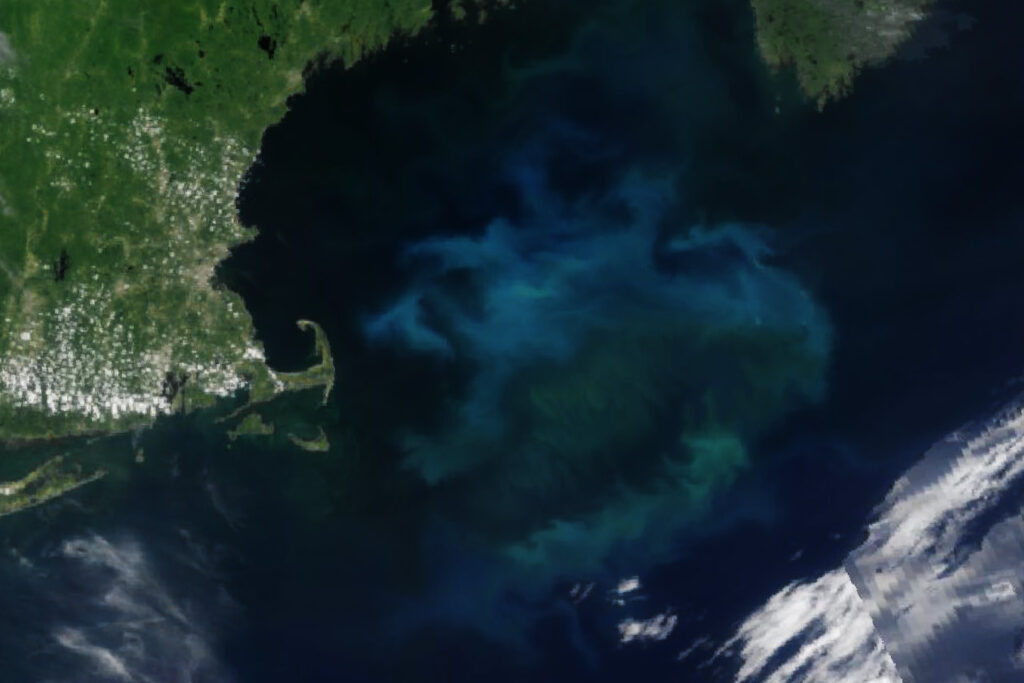A striking image of a massive bloom of phytoplankton—microscopic plant-like organisms that often float near the surface of the ocean—has been captured from space in the Gulf of Maine.
Coccolithophores, a type of phytoplankton that has been less common in the waters off the New England coast since about 2010, “made an impressive appearance” this summer, NASA said in a statement.
The image, taken by NASA’s PACE (Plankton, Aerosol, Cloud, ocean Ecosystem) satellite, captured of one of the largest blooms of its kind to turn up on the waters of the Gulf of Maine in recent years.
Coccolithophores have plates made of calcium carbonate. The light reflecting off the calcium carbonate gives the water a milky blue hue.
Catherine Mitchell, a satellite oceanographer at Bigelow Laboratory for Ocean Sciences, notes that coccolithophore blooms such as this one have been less common in the gulf waters over the past 15 years.
The presence or absence of these tiny organisms—along with other types of phytoplankton—in the Gulf of Maine can impact the entire ecosystem from finfish to shellfish and the local fisheries that depend on them.
Phytoplankton form a crucial part of the coastal and open ocean ecosystems and a healthy system houses a diverse range of species.
Coccolithophores do not produce any known toxins that are harmful to humans, but dense phytoplankton blooms of any species can potentially cause localized issues, such as low dissolved oxygen levels that can kill fish, microbiologist Brianna King warned in a March article for the Maine government’s department of marine resources.
Blooms of coccolithophores can also be beneficial for the local environment. For example, their calcium carbonate scales can act as a natural buffer, “dissolving under certain conditions and helping to counter-act ocean acidification on a very localized level,” King said.
Recent years have seen coccolithophores make a rebound. Researchers have also reported a rise in dinoflagellates—a type of phytoplankton with whip-like tails—and a decades-long drop in phytoplankton productivity. These changes have occurred amid changing water conditions, such as varying temperatures, NASA said.
The relationship between these changing water conditions and phytoplankton communities in the gulf is unknown but Mitchell believes ongoing research, with the help of images captured by PACE, could start pointing to some answers.
“A major benefit of PACE is its ability to ‘see the rainbow,'” Mitchell said, enabling scientists to observe the ocean color in more detail and at a higher resolution than before.
Do you have a tip on a science story that Newsweek should be covering? Do you have a question about marine life? Let us know via science@newsweek.com.
Read the full article here

